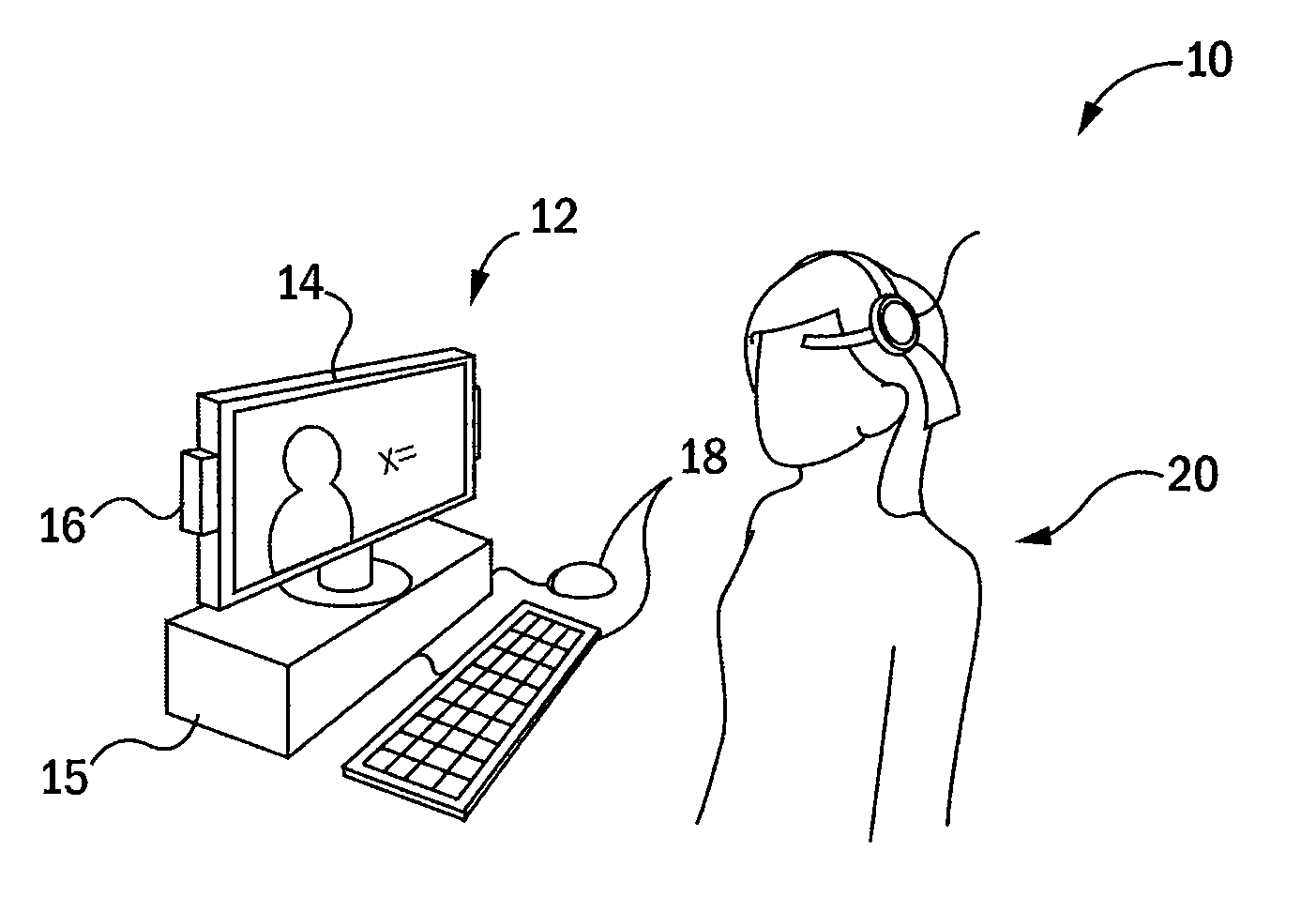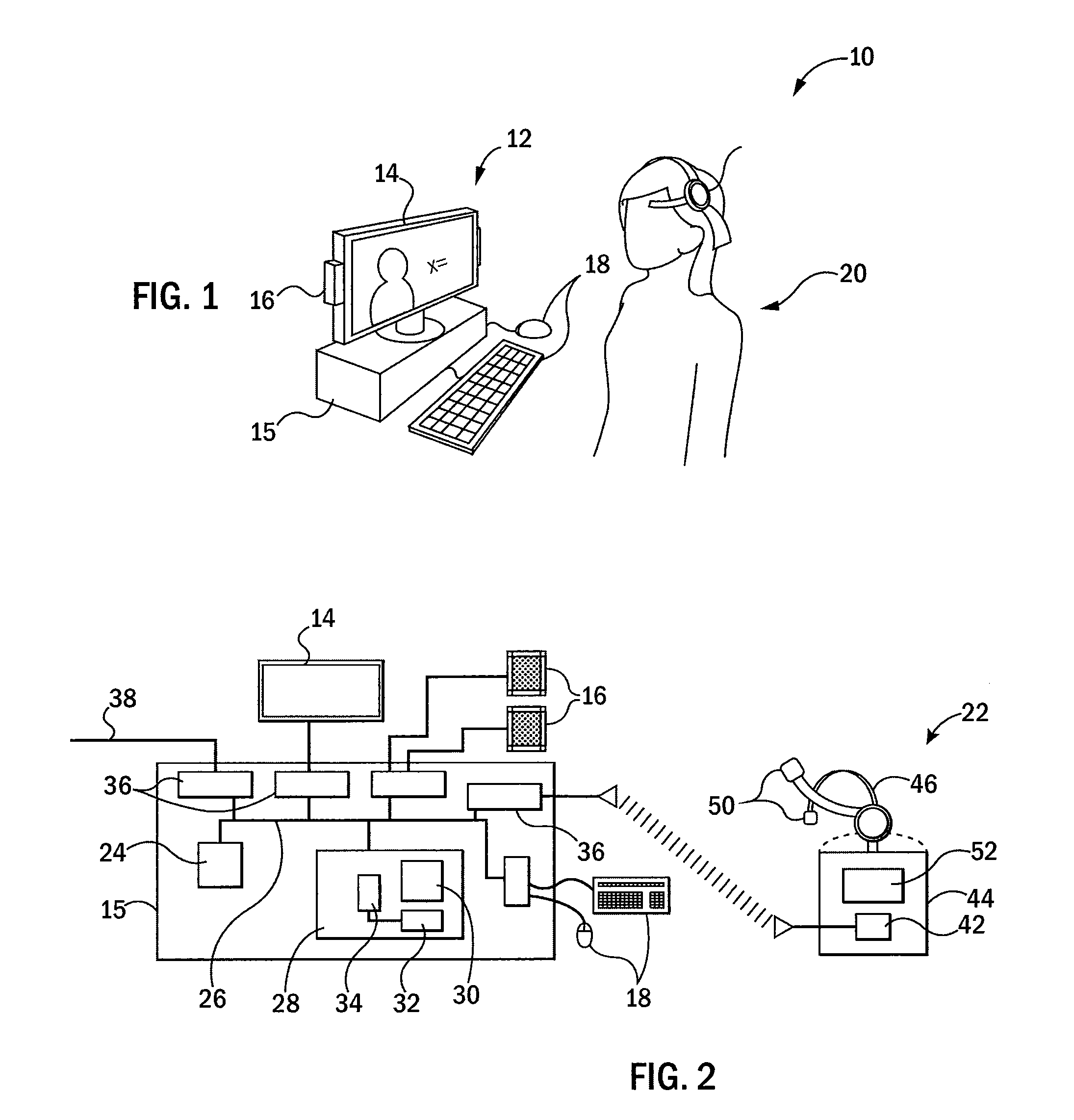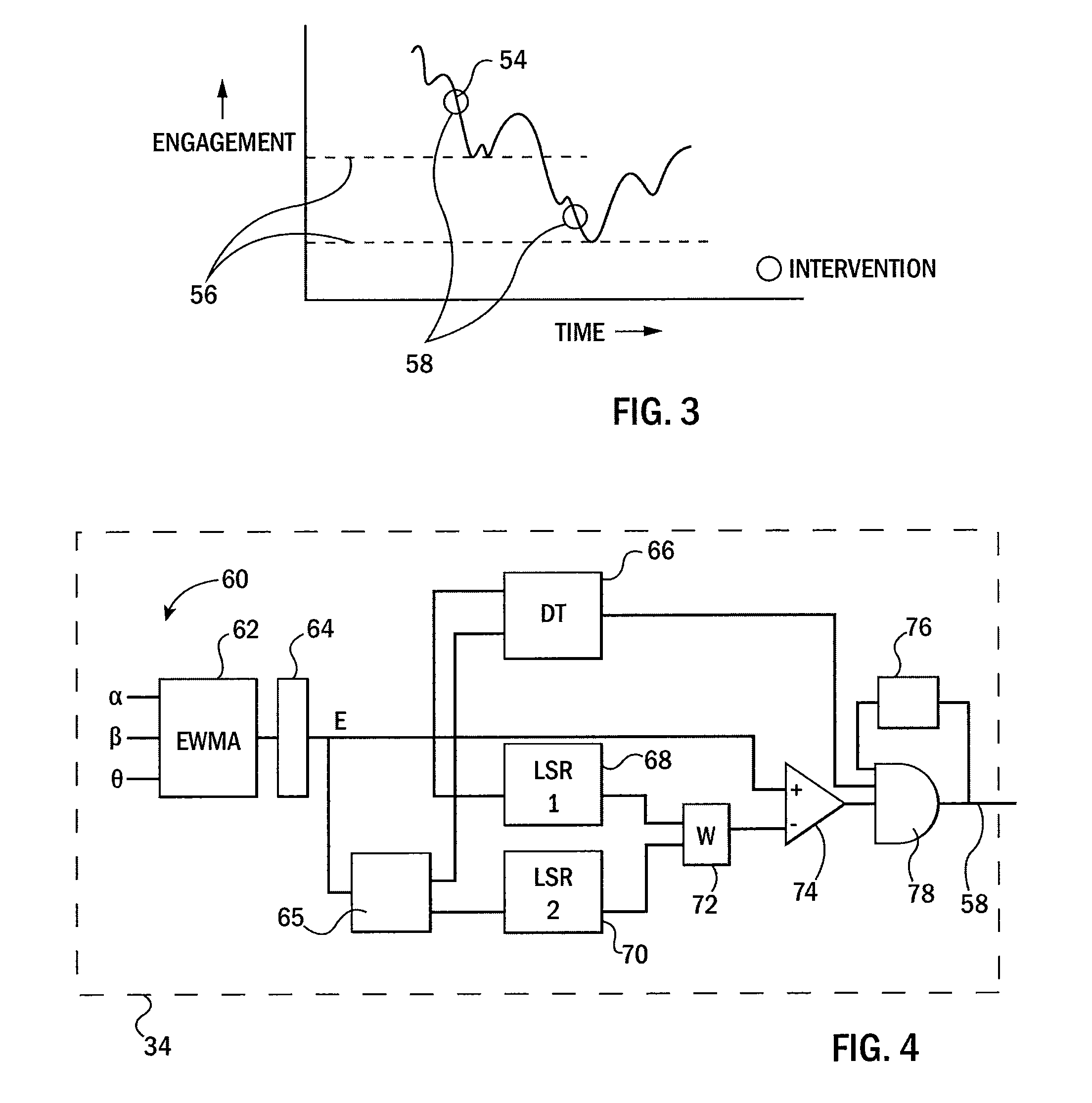Teaching System for Improving Information Retention Based on Brain-State Monitoring
a technology of brain state monitoring and teaching system, applied in the field of computer-based education, can solve the problems that computer-based education is not yet as effective as the best human tutor, and achieve the effect of increasing the effectiveness of computer-based education and promoting student attention
- Summary
- Abstract
- Description
- Claims
- Application Information
AI Technical Summary
Benefits of technology
Problems solved by technology
Method used
Image
Examples
example i
Example I
[0056]To investigate the effects of EEG-triggered adaptive immediacy cues in educational outcomes, a laboratory experiment was conducted in which participants received instruction from a humanlike robot. This experiment provided a 3×1 between-participants study in which immediacy cues displayed by a Wakamaru humanlike robot were manipulated as it told participants two narrative stories. The independent variable was the introduction of the immediacy cues and included three levels: (1) low immediacy, (2) immediacy cues at random intervals, and (3) “adaptive” cues triggered by drops in the participants' EEG-measured engagement levels determined by the dynamic thresholding process described above. The dependent variables included participants' recall of the details of the stories, self-reported learning, and EEG signals (used in post-hoc analysis to confirm that interventions successfully halted downward trends in student attention).
Experimental Procedure
[0057]In the study, ea...
PUM
 Login to View More
Login to View More Abstract
Description
Claims
Application Information
 Login to View More
Login to View More - R&D
- Intellectual Property
- Life Sciences
- Materials
- Tech Scout
- Unparalleled Data Quality
- Higher Quality Content
- 60% Fewer Hallucinations
Browse by: Latest US Patents, China's latest patents, Technical Efficacy Thesaurus, Application Domain, Technology Topic, Popular Technical Reports.
© 2025 PatSnap. All rights reserved.Legal|Privacy policy|Modern Slavery Act Transparency Statement|Sitemap|About US| Contact US: help@patsnap.com



